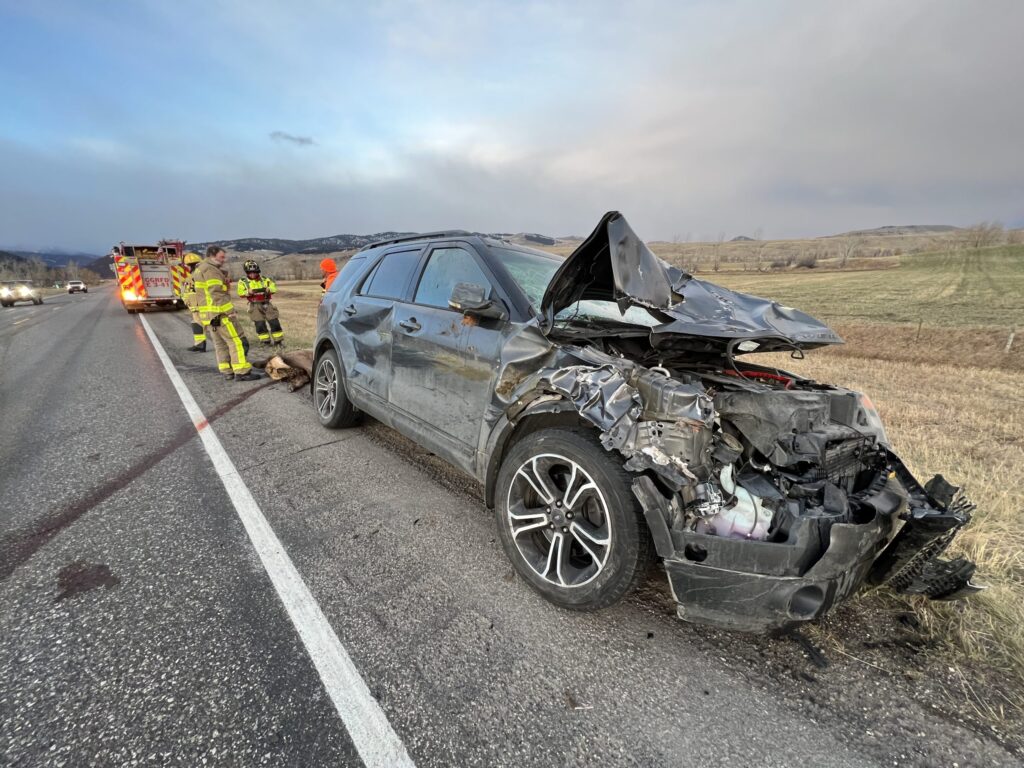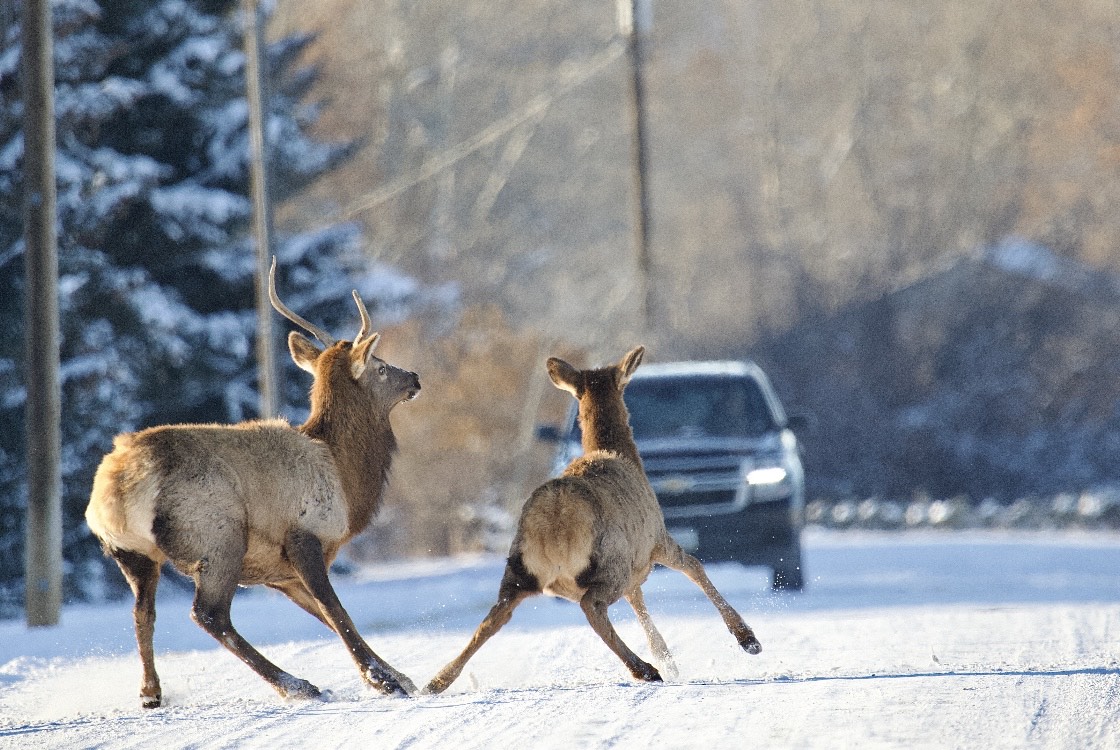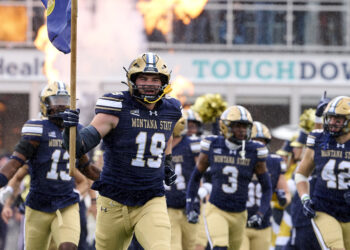By Jason Bacaj MANAGING EDITOR
A report has identified the stretch of U.S. Highway 191 between Gallatin Gateway and Spanish Creek as a top priority for a wildlife crossing, a road ecologist involved with the report announced last week.
This spring, those involved with the report plan to reach out to landowners and residents in that area to gauge whether there’s a willingness to develop a crossing there, said Liz Fairbank, road ecologist with the nonprofit Center for Large Landscape Conservation.
The report—the US-191 Wildlife & Transportation Assessment—began in 2021 and is a joint venture between CLLC and the Western Transportation Institute. Its goal, Fairbank said, is to combine public agency data, citizen science, local and expert knowledge and engineering concepts to find ways to reduce wildlife vehicle collisions on the highway “and make sure that this landscape maintains its permeability.”
The report is expected to be released this spring with in-person events in Bozeman and Big Sky. Montana ranks second in the nation in wildlife-vehicle collisions, according to data from State Farm Insurance, Fairbank said. And Highway 191 has one of the highest rates of such crashes in the state, with nearly 25% of all accidents between Gallatin Gateway and West Yellowstone involving wildlife.
Fairbank was speaking at a Thursday event hosted by the Gallatin Valley Earth Day Festival Committee titled, “Wildlife Crossings: Exploring Solutions to Prevent Wildlife-Vehicle Collisions.” The event is part of a series of talks leading up to the Earth Day Festival on April 22 at the Emerson Center for the Arts & Culture in Bozeman.
“I wasn’t presenting results here tonight, because our report isn’t final. But I can safely let you know that our number one priority area is from Gateway to Spanish Creek,” Fairbank said during the talk’s Q&A portion.
That stretch of highway has seen a sharp rise in crashes involving wildlife this winter. Seeing roadside carnage, local activists pressured state and local officials to do more to warn drivers of the dangers posed by the resident elk herd. They succeeded in getting the Montana Department of Transportation to put two variable-message signs near Gallatin Gateway and the mouth of Gallatin Canyon warning motorists of the danger.

Fairbank said the biggest challenge to building a wildlife crossing north of Gallatin Canyon is fragmented land ownership. Ted Turner’s Flying D Ranch has property on both sides of the highway at the mouth of the canyon, which Fairbank described as “awesome” because the ranch has conservation easements.
But the areas most frequented by the resident elk herd are farther north, where land parcels are small and owned by an array of different people.
“For a wildlife crossing structure to be built, there needs to be some participation from the landowners adjacent to the highway to say, ‘OK, we’re willing to put some kind of conservation agreement on our property’,” Fairbank said. “The next steps will definitely be reaching out, seeing if there is a willingness to do that.”
She pointed out that the federal Bipartisan Infrastructure Law dedicated money specifically to building wildlife crossings for the first time. And of that dedicated money, 60% of it is slated for projects in rural areas like Montana.
Also speaking at the Thursday event, which was held live at Bozeman’s Hope Lutheran Church and streamed online, was Rob Ament, road ecology program manager for the Western Transportation Institute at Montana State University. Ament provided some data around the costs of wildlife-vehicle collisions.
Ament said most of these crashes are underreported “across the board” in government datasets, as is the cost of such accidents. When calculating the impact of wildlife-vehicle collisions, state governments have assigned the animals a dollar value based on the number of hunting licenses sold per species.
The equation for determining the impact of such crashes has been adjusted by some groups in recent years to include the “passive use value” of the animals, which assigns a dollar value to the existence of a certain species and the value of knowing that species will be preserved for the benefit of future generations.
In Montana, there were an estimated 60,680 wildlife-vehicle collisions between 2008 and 2017. Ament said the direct human cost of those crashes was about $87 million per year. But including passive use into the equation, the total cost of those accidents rises to $120 million per year.
“The cost of collisions has gone up significantly. And so that justifies building crossing structures,” Ament said. “If you [build a wildlife crossing], you invest once, put in the infrastructure, it lasts for 75 years and if you’re reducing those collisions each year, it pays.”













